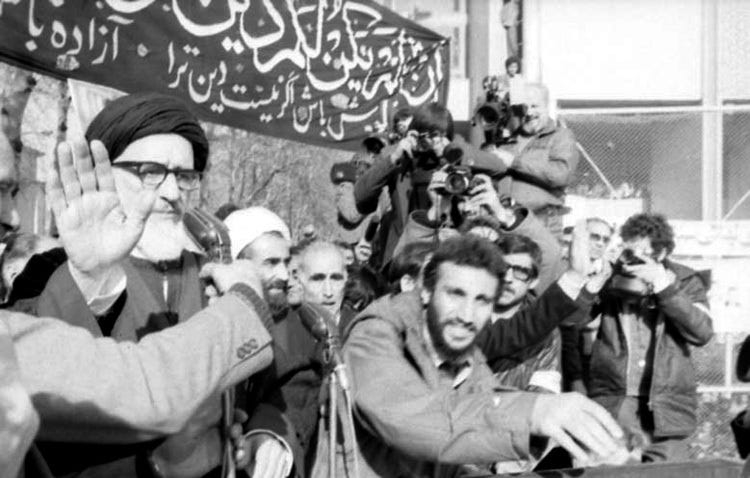The Far-left's Continued Support for Iran: A History of Overlooking Betrayal
Despite Iran's brutal crackdown on leftist movements after the 1979 revolution, many continue to support the regime, ignoring the lessons of history
Amid Israel’s ongoing Operation Rising Lion- a campaign aimed at degrading Iran’s nuclear and ballistic missile capabilities- a familiar dynamic has reemerged across parts of the Western activist left. Rather than focusing criticism on the Islamic Republic’s long-standing human rights abuses and the people in Iran risking their lives to fight it, some student groups, online influencers, and activist networks in the U.S. and Europe have expressed solidarity with the regime and its regional proxies, including Hamas, Hezbollah, and the Houthis. In Iran, however, the the far-left who once helped the regime rise to power paid the ultimate price.
Unlikely Allies: The Far-Left and Islamists in Revolutionary Iran
The 1979 Iranian Revolution was marked by a temporary and ideologically incongruous alliance between leftist student movements and Islamist forces loyal to Ayatollah Ruhollah Khomeini. Far-left organizations, including the Mojahedin-e-Khalq Organization (MKO/MEK), played a central role in mobilizing opposition to the Shah through strikes and mass protests. At the same time, Khomeini’s Islamist faction offered a religious framework that resonated deeply with large segments of Iran’s population.
While both factions opposed Western influence and the monarchy, their long-term objectives diverged significantly. Leftist groups advocated for a secular, socialist transformation of Iranian society, whereas the Islamists sought to establish a theocratic state grounded in Shi’a jurisprudence. The alliance, never based on shared values, was one of strategic convenience.
Once in power, the new regime moved swiftly to eliminate its former allies.
From Partners to Targets
Between 1980 and 1985, the Islamic Republic arrested and tortured between 25,000 and 40,000 political dissidents, tried approximately 15,000, and executed an estimated 8,000 to 9,500 individuals — many of them leftist activists who had participated in the revolution. The most extensive purge occurred in 1988, when Khomeini issued a secret fatwa authorizing the execution of political prisoners. Estimates vary widely, but human rights organizations report that between 2,800 and 30,000 individuals were executed, many without legal representation or due process. The majority were affiliated with leftist factions, particularly the MKO/MEK.
Concurrently, the regime enacted sweeping religious laws, including lowering the legal age of puberty for girls, restricting women’s property and inheritance rights, and enforcing compulsory hijab. These policies signaled a decisive rejection of the secular and egalitarian ideals espoused by the revolution’s leftist wing.

An Ideological Rift Ignored
Despite the regime’s track record of suppressing dissent and enforcing strict theocratic rule, a segment of Western far-left activists continues to view Iran through the lens of anti-imperialist struggle. On university campuses and across social media, this has manifested in expressions of solidarity with the Islamic Republic and its allied groups — often presented as part of a broader resistance to U.S. and Israeli foreign policy.
Supporters of this view often cite Iran’s opposition to American interventionism and its vocal criticism of Israel as justifications for their alignment. In this framing, Tehran is depicted not as a repressive theocracy, but as an anti-colonial actor resisting hegemonic powers. Accordingly, proxy groups such as Hezbollah and the Houthis are rebranded as resistance movements, their own authoritarian practices largely overlooked.

As previously documented by Jewish Onliner, groups such as National Students for Justice in Palestine (NSJP), US Campaign for Palestinian Rights (USCPR), Unity of Fields (UoF), International Peoples' Assembly (IPA), Samidoun, Masar Badil, CODEPINK, and US Palestinian Community Network (USPCN) are at the forefront of pro-regime activism. Their messaging frames Israel as an aggressor and the United States as complicit in regional destabilization, with solidarity for the Iranian regime presented as an extension of support for Palestinian liberation and broader anti-imperialist struggle.

When Anti-Imperialism Obscures Human Rights
This alignment stands in stark contrast to the Iranian regime’s documented history of human rights abuses. The 2022 death of Mahsa Amini, a 22-year-old woman detained by Iran’s morality police for allegedly violating hijab laws, brought renewed attention to the regime’s treatment of its own citizens. A United Nations fact-finding mission concluded that Amini died as a result of state violence. The protests that followed were met with lethal force: over 500 demonstrators were killed, more than 22,000 arrested, and many subjected to torture and sexual violence. The UN later characterized the crackdown as a crime against humanity.
Even as these events unfolded, the regime’s media apparatus, including outlets linked to the Islamic Revolutionary Guard Corps (IRGC), continued to engage international audiences by adopting the language of Western activism. By amplifying anti-Israel and anti-Western narratives- particularly those originating from student protests in the U.S. and Europe- Iranian state media seeks to frame its foreign policy as part of a global resistance to imperialism.




